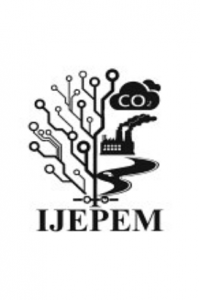Air Pollution Modelling with Deep Learning: A Review
Air Pollution Modelling with Deep Learning: A Review
Deep learning air pollution estimation, artificial neural networks, generative adversarial model,
___
- [1] Copeland, M., 2016, What’s the Difference Between Artificial Intelligence, Machine Learning, and Deep Learning?, https://blogs.nvidia.com/blog/2016/07/29/whats-difference-artificial-intelligence-machine-learning-deep-learning-ai/, retrieval date: 24.04.2018.
- [2] Şeker, A., Diri, B., Balık, H.H., 2017, Derin Öğrenme Yöntemleri ve Uygulamaları Hakkında Bir İnceleme, Gazi Mühendislik Bilimleri Dergisi 2017, 3(3): 47-64.
- [3] Wang, S.C., 2003, Artificial Neural Network, The Springer International Series in Engineering and Computer Science, Volume 743, 81-100.
- [4] Alsugair, A. M., Al-Qudrah, A. A. 1998, Artificial neural network approach for pavement maintenance, J. Comput. Civil Eng. ASCE, 2 (4), 249–255.
- [5] Sarle, W. 1997, Neural network frequently asked questions, ftp://ftp.sas.com/pub/neural/FAQ.html, retrieval date: 07.03.2018.
- [6] Kök, İ., Şimşek, M.U., Özdemir, S., 2017, A deep learning model for air quality prediction in smart cities, 2017 IEEE International Conference on Big Data (BIGDATA), 1973-1980.
- [7] Reddy, V., Yedavalli, P., Mohanty, S., Nakhat, U., 2017, Deep Air: Forecasting Air Pollution in Beijing, China, https://www.ischool.berkeley.edu/sites/default/files/sproject_attachments/deep-air-forecasting_final.pdf, retrieval date: 25.04.2018.
- [8] Li, X., Peng, L., Hu, Y., Shao, J., Chi, T., 2016, Deep learning architecture for air qualitypredictions, Environmental Science and Pollution Research.
- [9] Qi, Z., Wang, T., Song, G., Hu, W., Li, X., Zhang, Z.M., 2018, Deep Air Learning: Interpolation, Prediction, and Feature Analysis of Fine-grained Air Quality, IEEETransactions on Knowledge and Data Engineering, https://ieeexplore.ieee.org/stamp/stamp.jsp?tp=&arnumber=8333777, retrieval date: 20.04.2018.
- [10] Zhang, C., Yan, Z., Li, C., Rui, X., Liu, L., Bie, R., 2016, On Estimating Air Pollution from Photos Using Convolutional Neural Network, Proceedings of the 2016 ACM on Multimedia Conference, 297-301.
- [11] Bui, T.C., Le, V.D., Cha, S.K. 2018. A Deep Learning Approach for Forecasting Air Pollution in South Korea Using LSTM, https://arxiv.org/abs/1804.07891, retrieval date: 22.04.2018.
- Yayın Aralığı: Yılda 2 Sayı
- Başlangıç: 2018
- Yayıncı: Yasin Akın AYTURAN
Ozlem Tunc DEDE, Melike SEZER, Sevtap KARAKURT
Ozlem Tunc DEDE, Melike SEZER, Sevtap KARAKURT
Selected Nanotechnology Applications in Industrial Waste Water Treatment: A Review
Air Pollution Modelling with Deep Learning: A Review
Yasin Akın AYTURAN, Zeynep Cansu AYTURAN, Hüseyin Oktay ALTUN
Eda GÜNEŞ, Şerife BİÇER BAYRAM, Melike ÖZKAN, H. Ferhan NİZAMLIOĞLU
